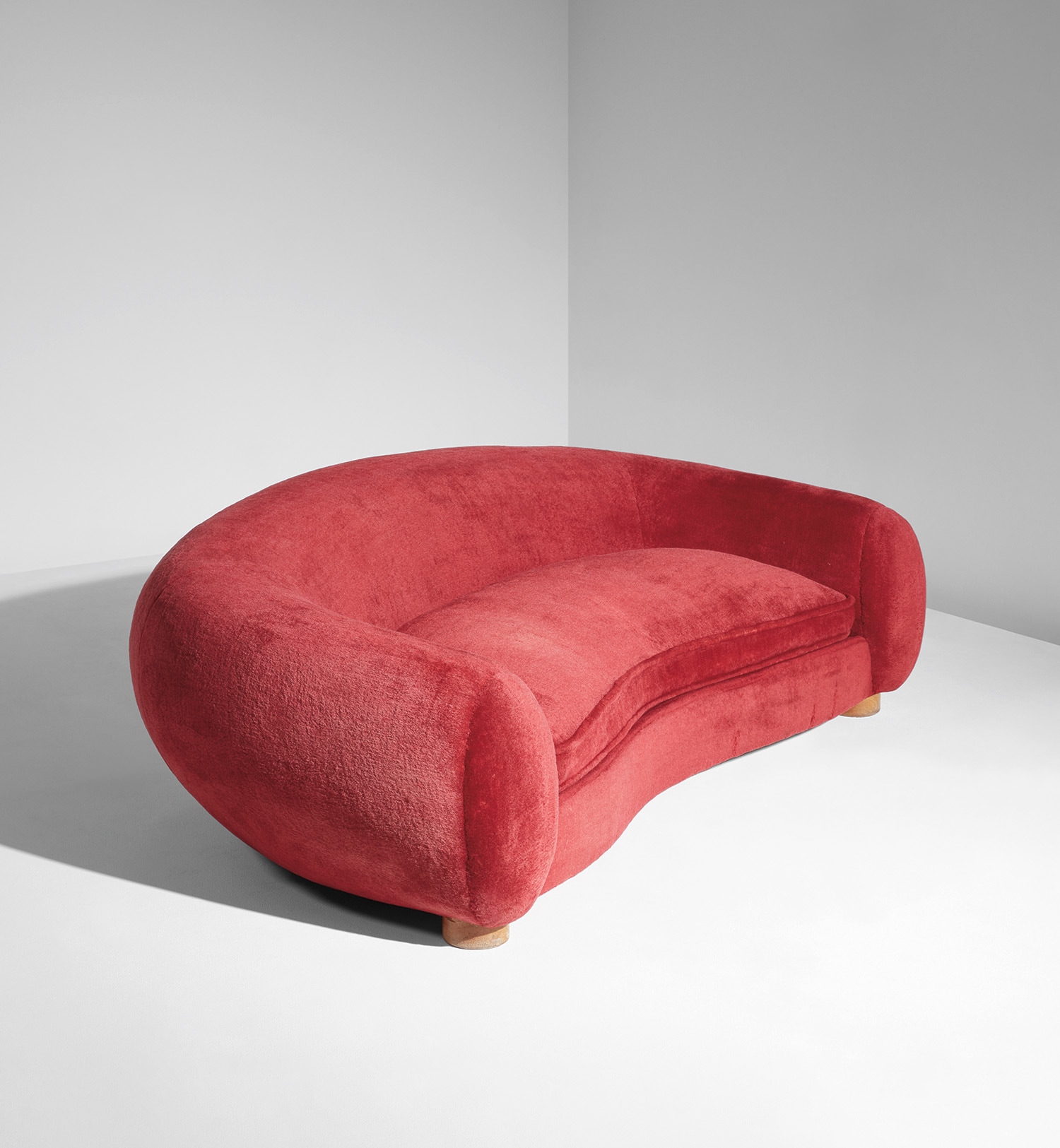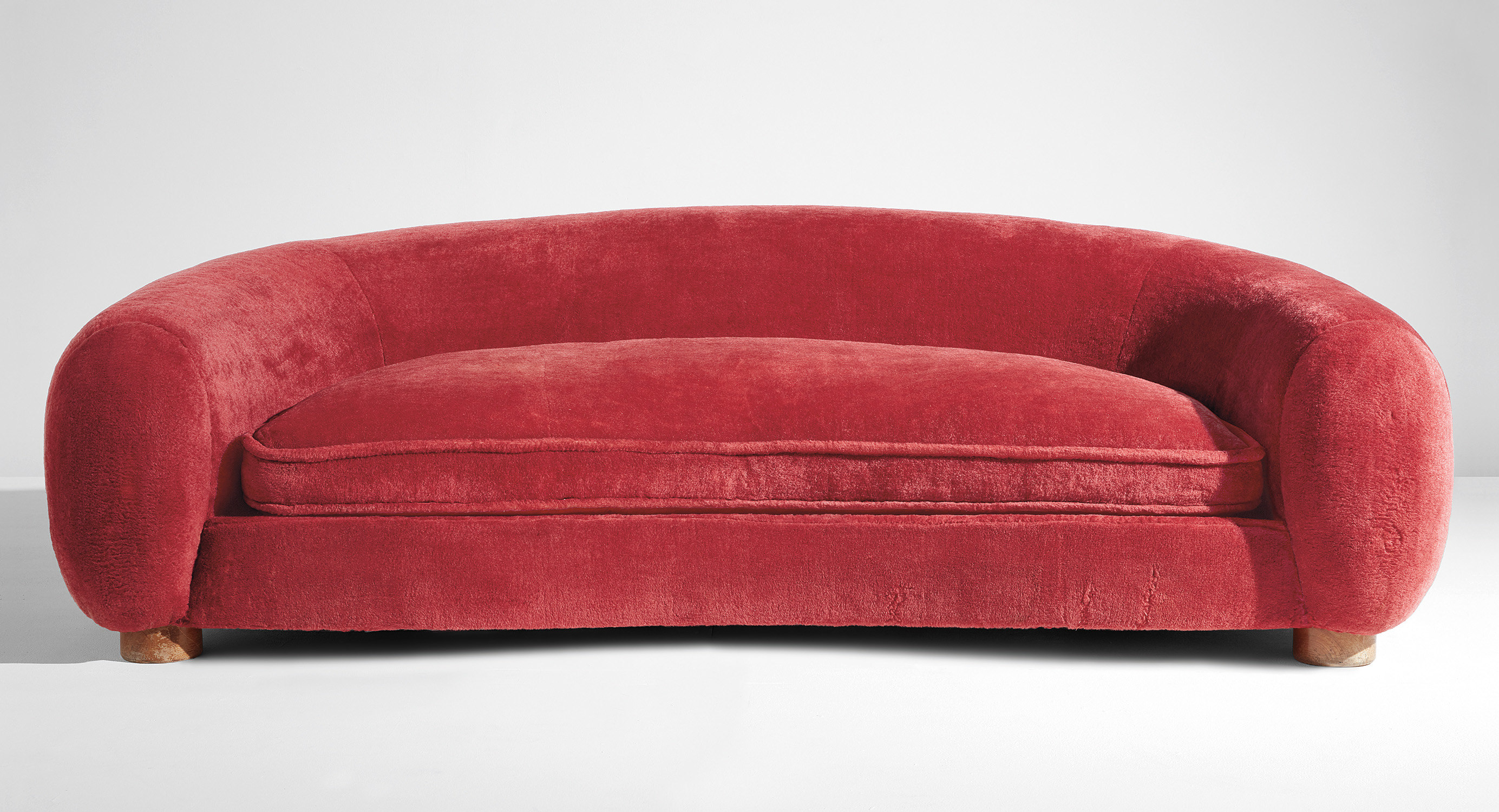



10
Jean Royère
"Ours Polaire" sofa
Full-Cataloguing
The soft round form of the Ours, which practically eliminates the typical parts and structure of most seating in favor of one continuous curve, is in keeping with Royère’s whimsical aesthetic as well as the biomorphic style already in full force in the 1950s. Yet while other designers worked with new materials and techniques to achieve their organic forms—Eero Saarinen’s fiberglass Womb chair and the Eameses' use of molded plywood come to mind—the Ours relied on traditional cabinetmaking methods to achieve its novel shape. Photographs of an Ours frame, likely taken in the courtyard of an artisan in the Faubourg Saint-Antoine, show the complex wooden understructure that served as the initial armature. To this carcass a metal frame padded with horsehair further defined the form, which was finally covered by the fabric upholstery, typically a plush velvet sourced from Italy.
The present lot retains the original thick red upholstery, a color which Royère particularly favored for this design. He used it for the Ours sofas he created for the French legation in Helsinki, depicted in a beautifully rendered gouache in the collection of the Musée des Arts Décoratifs (1950), as well as for the salon at the Maison de France in Rio de Janeiro (1955-1960).
Jean Royère
French | B. 1902 D. 1981Jean Royère took on the mantle of the great artistes décorateurs of 1940s France and ran with it into the second half of the twentieth century. Often perceived as outside of the modernist trajectory ascribed to twentieth-century design, Royère was nonetheless informed by and enormously influential to his peers. Having opened a store in Paris in 1943 before the war had ended, he was one of the first to promote a new way of life through interior decoration, and his lively approach found an international audience early on in his career.
In addition to commissions in Europe and South America, Royère had a strong business in the Middle East where he famously designed homes for the Shah of Iran, King Farouk of Egypt and King Hussein of Jordan. The surrealist humor and artist's thoughtful restraint that he brought to his furniture designs continue to draw admiration to this day.